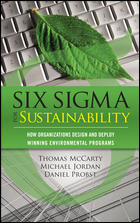NO! This is not a rant about the world coming to an end due to global warming. In this column I’ll discuss the conditions required for dimensional measurement and let environmental types sort out the rest of the universe.
First, a quick look at the easy stuff. The environment in a lab or inspection department must be clean so that you’re not measuring over dirt. Similarly, it has to be relatively free from physical vibrations which, if bad enough, will cause digital displays to constantly change. At one time, humidity was a concern when electronic comparators were in use but today’s solid state electronics have removed that problem. However, most labs keep humidity in the 40-50% range to prevent rust from forming on highly finished surfaces.
If you are using a laser-based device, humidity, among other elements, can become a problem unless the equipment monitors and corrects for it.
The environmental aspect that causes the most trouble for dimensional measurement is temperature. The most accurate measuring instrument available won’t be worth anything if temperature is not under control or the results corrected when it is not.
The reference temperature for dimensional measurement is 20°C. The authority for this statement is ISO 1 which is probably the shortest published standard in the world at one sentence in length. If you prefer the Fahrenheit system, the exact equivalent is 68°F. On its own, a laboratory can be closely controlled but the presence of heat-radiating humans, lighting or computers can cause temperatures to move all over the place.
In a perfect world the ambient or room temperature would be exactly as I’ve noted including all things within it. But, before you start slashing your wrists over this, remember that the whole room doesn’t have to be that closely held if the temperature is stable and you take precautions to deal with it. And the masters, instruments and object being measured are essentially of the same material. What follows are some ways to deal with this environmental issue.
- Items to be measured should be left in the room to climatize. How long that should be is dependent on the volume of the item and what the temperature is from whence it came. An electronic thermometer with probe can be used to determine when the item being measured is the same as the instruments and masters being used
- Small items can change temperature quickly but a simple normalizing plate can help keep them stable. This plate is simply a piece of steel or aluminum that is kept in the room all the time. The items to be measured are placed on it so their temperature will not fluctuate with small variations in the room.
- Avoid handling items more than necessary, especially with bare hands - use cotton gloves
- For high accuracy work it may be necessary to have a plastic shield between the inspector and the comparator being used to deflect radiated body heat
- High resolution measuring heads, tailstocks or anvils that are adjusted or changed during measurement often generate localized heat which can introduce errors. Always wait before taking readings after adjustments are made
- Ensure windows do not allow direct sunlight into the room or permit drafts from outside sources
- Place deflectors on ducts to disperse air uniformly throughout the room. If air is entering or moving around the room in a concentrated way temperature uniformity will suffer.
- A simple air lock can be used to keep temperatures stable and dust from entering the room
Despite your best efforts, temperatures can vary between the floor and ceiling. This can become a problem if you are using tall measuring devices. This can be checked with an electronic thermometer by taking readings on samples located at different heights in the room.
I wouldn’t pretend to be able to measure something like the world’s temperature throughout history. After all, I’m not up to speed on using tree ring counts to determine temperature values and don’t have computer programs to massage the data so I’ll keep my focus in the lab. However, if I had one of those little bonsai trees in the lab, maybe I could…



